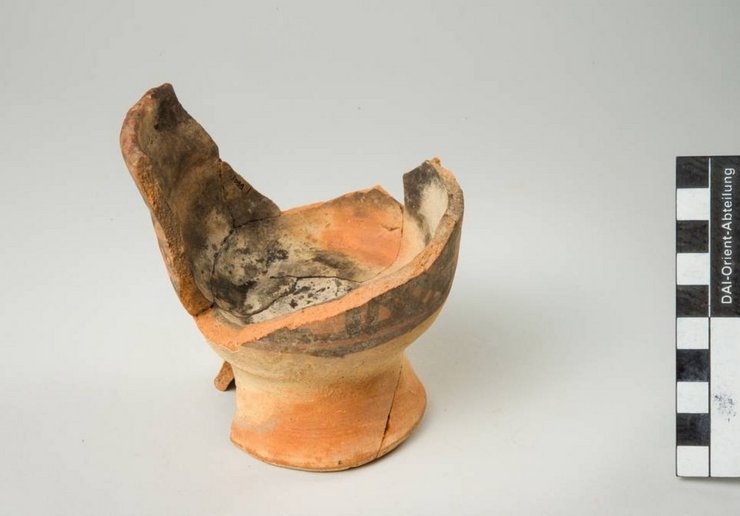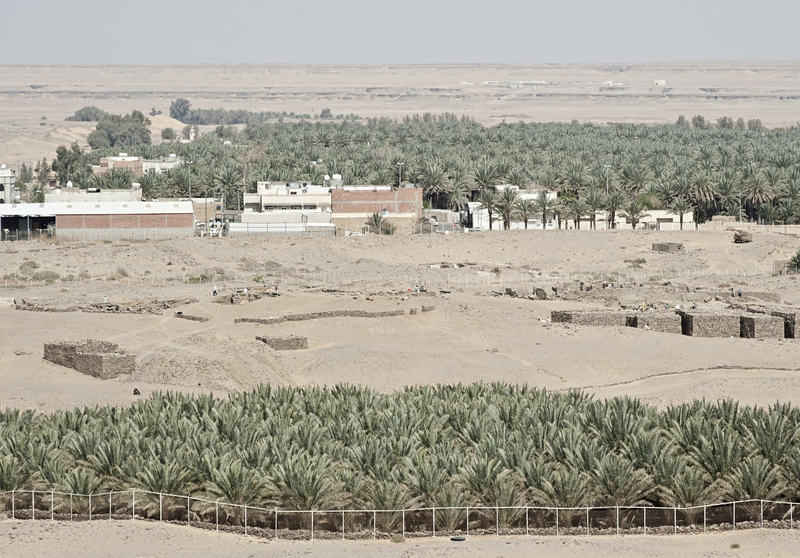Scents of Arabia

Brenner aus Keramik (Frühe Eisenzeit, 11th bis 9th Jh. v. Chr.) aus Tayma © DAI Orient-Abteilung & Heritage Commission // J. Kramer
An interdisciplinary research project is shedding new light on the world of fragrances in ancient Arabia. The starting point is an investigation of fragrances from the Tayma oasis in northwestern Saudi Arabia – a central hub in the ancient trade network between the Mediterranean region and South Arabia. As part of a long-term project funded by the German Research Foundation (DFG) and carried out by the Orient Department of the German Archaeological Institute (DAI) in cooperation with the Heritage Commission of Saudi Arabia, researchers have, for the first time, obtained biomolecular evidence of ancient fragrances and incense.
Fragrances as a medium of cultural practice
Using advanced biomolecular techniques such as metabolomics, researchers were able to identify fragrances and incense resins directly in archaeological incense burners. Conducted at the Technical University of Berlin and the Max Planck Institute for Geoanthropology in Jena, these analyses provide new ways to reconstruct the olfactory dimensions of past societies – from the cultural and economic use of aromatic substances to everyday practices. The study also contributes to sensory archaeology, a field of research that expands archaeological science to include the dimension of human perception. Scents are understood not as accessories; they are recognized as a central medium of cultural practice, carrying meaning, memory, and identity.
Publication combines science and perception
The findings obtained by an international team of researchers are now published in a conference proceedings volume based on a workshop at the Seminar for Arabian Studies in Berlin. The publication was edited by Arnulf Hausleiter, Orient Department at the DAI, and Barbara Huber, Bonn Center for ArchaeoSciences (BoCAS) and Max Planck Institute for Geoanthropology. The study combines scientific analysis, archaeological context, and historical interpretation, offering a comprehensive reconstruction of sensory experience in the ancient Arab world – and is an example of close interdisciplinary and international cooperation: “The analyses of incense burners from Tayma provide new insights into the cultural practices of ancient oases on the Arabian Peninsula,” explains Arnulf Hausleiter. “Classical incense (Boswellia) was not used until the Nabataean period; before that, pistachio resin, a species of Commiphora, and conifer resin predominated. The findings allow for a detailed reconstruction of regional fragrance practices and trade relations. Tayma thus served not only as a hub for the trade of fragrances, but also as a consumer of these products.”
Olfactory Heritage
“Fragrance and smoke are volatile media – they leave hardly any traces, and yet they shaped rituals, spaces, and identities. Our research brings this invisible, long-lost aspect to the surface for the first time”, emphasizes Barbara Huber. The publication highlights the relevance of olfactory heritage as part of intangible cultural heritage. It shows that in ancient times, scents were not only traded, but also experienced, shared, and remembered – as expressions of social identity and ritual practice. “These important findings contribute to a new and more complex understanding of the economic and cultural practices of the oases on the Arabian Peninsula”, says Ajab AlOtaibi, Director General for Archaeology at the Heritage Commission.
Kontakt
PD Dr. phil. habil.
Arnulf Hausleiter
, Wissenschaftlicher Referent für die Archäologie der Arabischen Halbinsel
Arnulf.Hausleiter@dainst.de
Doris Fleischer
, Pressereferentin und stellv. Leitung Kommunikation
Doris.Fleischer@dainst.de
DAI Pressestelle
Podbielskiallee 69
14195 Berlin
Tel.: +49 (0)30 187711-120
Mail: presse@dainst.de
Förderer

Deutsche Forschungsgemeinschaft (DFG)




